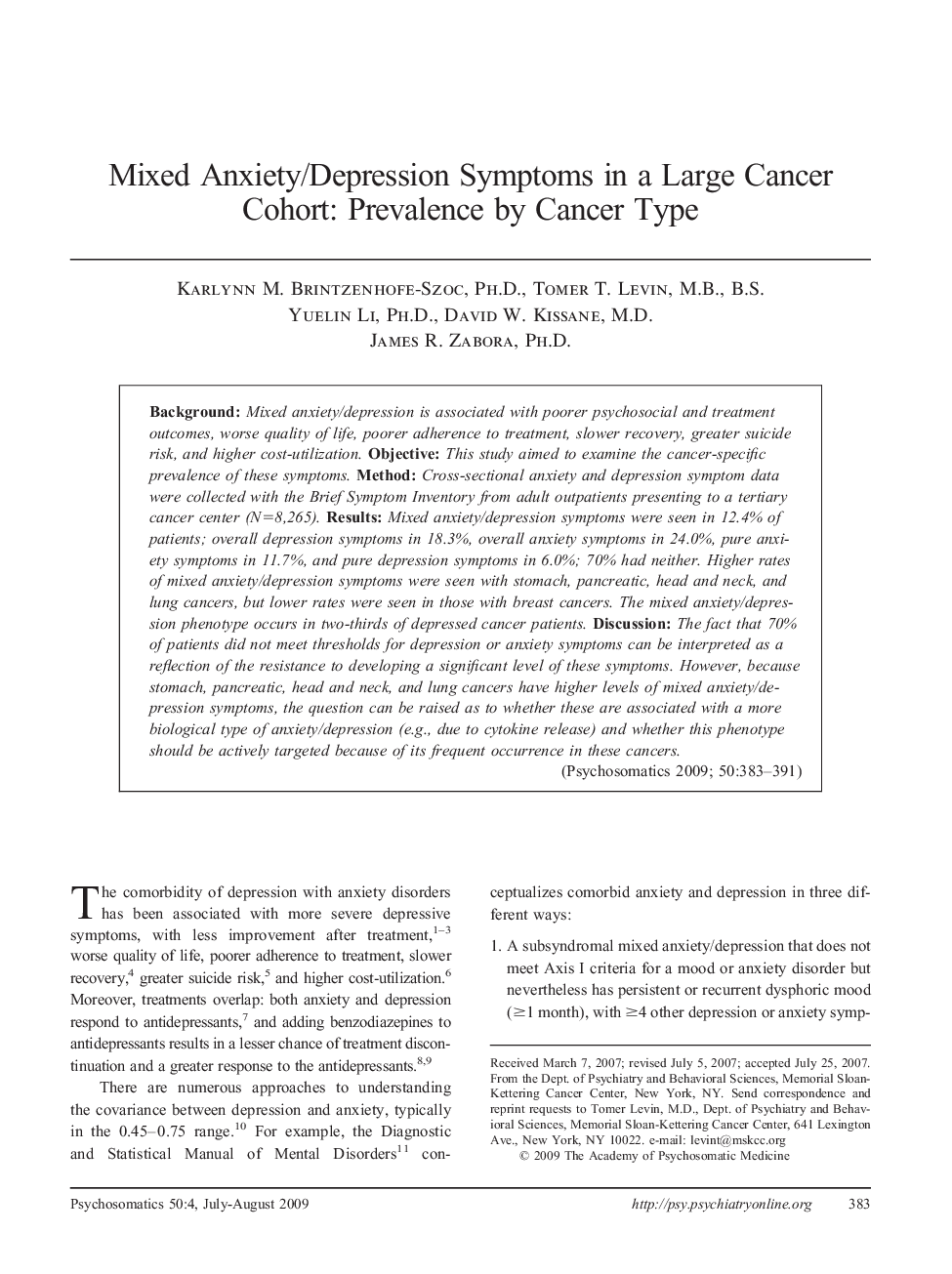| Article ID | Journal | Published Year | Pages | File Type |
|---|---|---|---|---|
| 338738 | Psychosomatics | 2009 | 9 Pages |
BackgroundMixed anxiety/depression is associated with poorer psychosocial and treatment outcomes, worse quality of life, poorer adherence to treatment, slower recovery, greater suicide risk, and higher cost-utilization.ObjectiveThis study aimed to examine the cancer-specific prevalence of these symptoms.MethodCross-sectional anxiety and depression symptom data were collected with the Brief Symptom Inventory from adult outpatients presenting to a tertiary cancer center (N = 8,265).ResultsMixed anxiety/depression symptoms were seen in 12.4% of patients; overall depression symptoms in 18.3%, overall anxiety symptoms in 24.0%, pure anxiety symptoms in 11.7%, and pure depression symptoms in 6.0%; 70% had neither. Higher rates of mixed anxiety/depression symptoms were seen with stomach, pancreatic, head and neck, and lung cancers, but lower rates were seen in those with breast cancers. The mixed anxiety/depression phenotype occurs in two-thirds of depressed cancer patients.DiscussionThe fact that 70% of patients did not meet thresholds for depression or anxiety symptoms can be interpreted as a reflection of the resistance to developing a significant level of these symptoms. However, because stomach, pancreatic, head and neck, and lung cancers have higher levels of mixed anxiety/depression symptoms, the question can be raised as to whether these are associated with a more biological type of anxiety/depression (e.g., due to cytokine release) and whether this phenotype should be actively targeted because of its frequent occurrence in these cancers.
